Are charging stations for electric cars free?
Most public charging stations for electric cars are not free, though some retailers, supermarkets, or workplaces may offer free AC charging as a perk.
Last updated:
Charging an electric car at home with a smart wallbox such as the go-e Charger Gemini or Gemini flex is easy. You have time to get to grips with how it works, as it is installed right outside your home or in the garage. In addition, the set up is usually very quick. For instance, in the case of the go-e Charger Gemini flex, you just need to attach it to the wall and plug it into a socket. Piece of cake, right?
But when it comes to using a public charging point, you might feel pressured, because some people may be waiting to charge at the same station or, maybe, you are travelling somewhere and don't want to be late for your destination.
Deciding on a suitable payment method is one of the most important things in this matter. You can’t charge if you can’t pay. What do you need to pay for car charging? A special card, an app, or just a credit card? Is there an even easier way? We explain here.
You can pay at a charging station using a charging card, a mobile app, or directly with a credit/debit card. Some stations also support Plug & Charge or Autocharge, where payment is automatic once you plug in your car.
The list below outlines the key payment options you have as an electric car driver.
Charging card: Many mobility service providers offer RFID (Radio-Frequency Identification) cards that you can register for. These charging cards allow you to access and pay for charging at affiliated charging stations with a simple tap or swipe, making it a decent option for frequent EV drivers.
Charging app: Charging apps have become increasingly popular, allowing EV owners to locate nearby charging stations, initiate charging sessions, and process payments all through their smartphones. These apps often provide real-time information on station availability and pricing.
Direct payment via credit/debit card: At some charging stations, you can pay directly using your credit or debit card. This option is straightforward and doesn't require any additional memberships or apps. However, pricing and payment methods can vary between different charging networks.
Plug & Charge: Some modern electric cars and charging stations support a "Plug & Charge" feature according to the ISO 15118 standard. When you plug in your electric car, the charger and your vehicle communicate directly. They automatically authenticate your session and handle billing without any actions from your side. Your charging session costs are charged to the payment method associated with your electric car account, which you set up with your personal information and card details. It simplifies the process even further.
Autocharge: The concept is similar to Plug & Charge but is available for a higher number of electric vehicles. The Autocharge feature is accessible, for instance, at EnBW charging points. Here, the charging station automatically identifies your electric vehicle and initiates the charging process. Connect it to your EnBW mobility+ account and the payment process will become simple as the incurred electricity costs are directly attributed to your user profile.
The charging card has an integrated RFID (Radio Frequency Identification) chip that enables the contactless transfer of information between the card and the RFID reader at the charging station. This option is very common, but you need a bit of preparation. No worries, in the end, it's as easy as 1-2-3, and we're here to walk you through it.
Step 1. Take your time, conduct a bit of research and order your card
Compare various mobility service providers and their charging tariffs. Charging costs depend on these tariffs. When you use your mobility provider's charging card at a charging station, the card communicates with the station, and the provider subsequently invoices you for the charging expenses.
Mobility Service Provider (MSP) offers services like charging subscriptions and billing, making it more convenient for EV owners. It affects pricing based on factors such as charging card costs, their business model, and service fees.
Charge Point Operator (CPO) manages the physical charging stations, ensuring their availability and maintenance. It influences pricing through considerations like price restrictions, hardware expenses, charging power, network connection fees, power supply costs, starting tariffs, time-based tariffs, blocking fees, kWh fees, and charges per charging session.
More and more charging stations do the billing based on the kWh you've charged.
When it comes to tariff plans, some MSPs might offer low basic fees with higher charging rates for occasional drivers or those who mainly charge at home. Alternatively, for frequent drivers who use public charging often, some providers offer a higher basic fee but lower charging rates.
There are also flat-rate tariffs that can be per charging process or monthly with a fixed quota of kWh or charging time.
Important: Different charge point operators can offer varying pricing per minute or kWh at their charging stations, even if you have a contract with a specific provider. Meanwhile, mobility service providers typically manage charging tariffs, and they may also operate their own charging stations, acting as CPOs.
When you have a contract with a certain provider, you can often enjoy cost-effective charging at their own stations. This contract might also grant you access to charging stations from other charge point operators, but not all of them. You can only use your contract for charging at stations that have agreements with the provider and allow for roaming.
So you see, the pricing game mostly lies in the hands of two parties - mobility service providers and charge point operators.
You need to choose an MSP and a tariff plan that suits your needs and preferences. We encourage you to choose one that has more charging points on the routes you drive or plan to drive. That way, you are always covered.
Note: When you select a particular provider, it doesn't limit you to using only their charging stations. Especially considering that some of them don’t even have their own charging points. Providers establish partnerships with various charge point operators, so all you need to do is locate a charging station that collaborates with your chosen provider, which is typically a simple task.
If you live in Austria, a card from ÖAMTC ePower will let you access over 14,000 ÖAMTC charging points including its roaming partners throughout Austria. Meanwhile, ÖAMTC acts as a mobility service provider and a charge point operator, which means its charging points can also work with charging cards and apps from the partner providers such as Salzburg AG.
For Germany, ADAC e-Charge is one of the most popular MSPs with more than 190,000 charging points in Germany, Austria, Switzerland and six other European countries. However, if you spot an ADAC charging station, keep in mind that you can also use charging cards of its partner providers such as EnBW to charge there.
Here are some other mobility service provider options you have:
Shell Recharge - get access to over 500,000 public charging stations across Europe.
EnBW - available at more than 500,000 charging points in 17 European countries.
Smatrics - charge at any of the 45,000 charging points throughout the EU; over 450 normal and fast charging points in Austria.
These are just a few examples. There are many more MSPs and CPOs available.
Step 2. Apply for the card
Once you've made your choice, request the RFID card. After setting up your account and getting the payment verification sorted out, the provider will mail the RFID card right to your doorstep.
Basically, you can choose whether to charge with an RFID card or a mobile app. It is, however, recommended to order a charging card anyway so that you’re not in trouble if your phone suddenly stops working and you have hundreds of kilometres ahead of you.
In any case, you'll need to create an online account first. In your account, you'll be asked to enter your personal information, preferred payment details, and charging preferences.
Tip: You can link your RFID card to your credit/debit card or, as an alternative, an online payment system. The options you have depend on the mobility service provider you choose. In Austria, it could be, for instance, Energie AG or ÖAMTC ePower.
Step 3. Find a charging point
Now you are ready to go and charge your electric car at a charging station affiliated with your charging card's mobility service provider.
Which MSP and which tariff is the best, depends entirely on your needs. But in terms of saving money, there's nothing better than home charging. Using a smart wallbox such as the go-e Charger is the most budget-friendly choice. You can benefit from charging excess solar power and, for example, have the charger monitor electricity prices and start charging when the price drops below a limit you set.
Do you want to allow Integration of youtube videos?
Allows the playback of videos, that are hosted on youtube.com. By allowing this feature, you accept the privacy agreement of google.
And by the way, the price-performance ratio of the go-e Charger is unbeatable, which is why the go-e Charger Gemini flex became a price-performance winner in the Auto Bild and P3 Wallbox test.
Step 4. Charge your electric vehicle
Once your car is parked at the charging point, connect the charging station to your vehicle with a charging cable.
Step 5. Tap your card on the RFID reader of the charging station
This way, you initiate charging. When your battery is charged, disconnect the cable and put it back. You can continue your journey, and the charging cost will be deducted from the bank account linked to your charging card during the sign-up process.
This is another popular payment method for charging electric vehicles. You might forget your RFID charging card at home, while you’re not likely to drive off without your smartphone. So why not download the app to play it safe? :)
Normally, providers of charging cards also have well-designed mobile apps that will help you to charge with comfort. For instance, you can download Shell Recharge or EnBW mobility+ app. In addition, you can try the IONITY app - the company doesn’t offer charging cards though. IONITY is a provider with more than 400 charging parks with an average of 6 charging points and numerous partners across Europe.
Let us invite you on a very short four-step walk.
Step 1: Find and download the app
If you already have a charging card, simply download the app from the same MSP. Or you can do it the other way round - first, find the MSP you prefer and download their app, and then order the charging card from them.
Download the app in advance, at home. This way, you can configure it from the comfort of your couch, instead of wasting precious minutes on the road.
But of course, you can also do everything when you are already at the charging point. It usually has a QR code right on it. As soon as your car is parked and ready for charging, take out your smartphone and scan that code.
After scanning the QR code, your smartphone will automatically redirect you to either the App Store or Google Play. There, you can download the app you need for the charging station. It's normally a rather quick process, unless you're in a spot with shaky network coverage.
Step 2: Sign up in the app
Once you've got the app installed, it's time to set it up. You'll need to enter some personal information, including your credit card number or online wallet (e.g. PayPal) details. You can also enter several payment methods if you plan to use different ones.
Step 3. Find a charging station
Use the map integrated in your app to find a suitable charging point. There, you can normally see if the station is free or occupied, its maximum charging speed and other essential details.
Step 4: Start charging
The charging station has several charging points? Select the one to which the car is connected, in the app. Follow the instructions on your smartphone to start charging.
Once your car’s battery is ready for the road, the app automatically handles the billing. No need to keep track of receipts or invoices – it's all taken care of right there in the app.
Contactless payment with a bank card seems to be an easy way to pay for charging, doesn’t it?
It's not that it's a must for every charging station, but the number of options is growing. Additionally, new regulations are emerging that require every charging station to offer credit or debit card payment options. However, despite being anticipated for several years, these changes have yet to be implemented at most charging stations.
In the meantime, some providers are setting rules for themselves. For instance, payment terminals will be available at all new IONITY locations that open from summer 2023.
The process is different depending on what charging station you use. Here is an example of charging with a credit card at an IONITY charging station:
Step 1. BEFORE plugging in your vehicle, have a look at the welcome screen and change the language if necessary.
Step 2. Take your bank card, which should normally have an NFC chip, and simply tap it on the NFC card reader.
Step 3. Use the touch screen keypad to enter your PIN. This is necessary as the pre-authorisation amount is relatively high. In the case of IONITY, it’s 40 EUR.
Step 4. Once the terminal displays "AUTHORISED", connect the charger to your vehicle. Your card will be charged for the electricity consumed during the session. Most charging stations provide information on a display or through a mobile app, allowing you to monitor the charging progress.
Step 5. When your car is charged to your desired level or when you want to stop the session, simply pull out the charging cable. You may need to stop charging first using the vehicle display or app, a button on the charging station or the charging app.
Step 6. You can receive a receipt or confirmation of the charging session as PDF by scanning a QR code or visiting a special website. This will show the cost of the charging session and the card payment details.
Important: Paying directly by credit card for charging can sometimes be pricier than opting for a subscription with a special charging tariff, where you need to use an app or the charging card.
Note: While many charging stations do not offer this method, some, like EVN, have a QR code that will take you to an online page where you can enter your credit card details and charge without an app or charging card.
With a function called “Plug & Charge” according to ISO 15118, you can forget about scanning QR codes and using apps. Your electric car and the charging station identify each other when you plug in the charging cable, and your payment data is already saved, so you don't need to type it in on your smartphone's screen, which is super useful especially when you're in a hurry or it’s raining outside. Just plug in the cable and the charging starts.
The problem is that not many electric cars currently support this function as it is hard to implement. Mercedes, for example, has introduced Plug & Charge in its EQS and EQE models. Nevertheless, the list of Plug & Charge-capable electric vehicles is constantly growing.
To be able to use the Plug & Charge, you need to find a suitable charging station that usually has a PnC mark on it. Charge point operators such as IONITY, EON and some others started to enable using this feature.
The system is very similar to the previous method. You need to introduce your vehicle e.g. to one of EnBW charging points and they will be able to recognise each other forever. There are some more providers supporting Autocharge. Nevertheless, Plug & Charge meets higher safety requirements and will probably become the standard in the future.
Here’s how you use Autocharge:
Step 1. Download and open the EnBW mobility+ app and create a customer account.
Step 2. Select your vehicle within the app. Look for the AutoCharge symbol above the vehicle icon. If you see it, your car is compatible with EnBW's AutoCharge function.
Step 3. To activate AutoCharge, you need to be at a suitable EnBW charging station. Unfortunately, this activation cannot be done remotely; it must be done on-site. Use the EnBW mobility+ app to locate nearby charging stations that support AutoCharge.
Step 4. Follow the app's guidance to activate AutoCharge on-site. This process typically takes about four to seven minutes.
Step 5. Once you see a green check mark on your display, you've successfully completed the activation process. Next time you want to charge, simply connect your car to the charging station with a cable and charging will start.
To charge your Tesla, just create a Tesla account and link it to your favourite payment method – that could be a credit card, debit card, or even an online wallet. You'd have to create an account anyway to use all the features of your Tesla. So, once your account is good to go, you can easily pay for charging with the method you've added at any Tesla Supercharger. Tesla does not work according to ISO 15118 but the result in terms initiating the charging process is the same and its charging points immediately identify Tesla vehicles that have been set up for charging.
And if you don't drive a Tesla, but, for example, a Peugeot e-2008, Volkswagen ID.4 or Kia EV6? You can still use Tesla superchargers in most European countries.
What's the process for charging a non-Tesla electric car?
Download the Tesla app on iOS or Android and set up a Tesla Account.
Choose the “Charge Your Non-Tesla” option and locate your Supercharger site.
Select a payment method, add your payment details, plug in your car, select a charging stall, and tap “Start Charging.”
When you're finished, tap “Stop Charging” to end your session.
The cost of charging for non-Tesla drivers differs from site to site, and you can find this information in the Tesla app. Additionally, Tesla provides an optional Supercharger membership that enables non-Tesla vehicles to charge at reduced pay-per-use rates compared to the standard pricing.
Many charging point operators offer billing per kWh. However, some older charging stations do not have a calibrated electricity metre required for this and therefore charge per minute. The second approach is not always fair, as some electric cars charge slower than the others. Converting a charging station from uncalibrated to calibrated metres is often deemed impractical. Hence, at older locations, you can expect to continue paying by the minute for the foreseeable future.
Note: Depending on the tariff, a flat rate is charged per load in addition to the pricing per minute or kWh. It can be around 1 euro.
Charging time is measured from the moment the vehicle is plugged into the station, and the billing typically concludes when you disconnect the charging cable or cease charging through the app, not necessarily when the battery is fully charged.
A good number of charging stations include a blocking fee, which comes into play if you surpass the designated time limit. In such cases, you end up being charged an additional fee for every minute your vehicle remains connected to the charging point beyond the set time frame. As an example, at Smatrics AC charging points, they apply a blocking fee of €0.15 per minute after 300 minutes of charging.
Getting free charges for your electric vehicle might seem a bit unreal, but it is actually possible. Regular public charging stations you can find on the road don’t usually offer any freebies. But, sometimes, you can fill in your battery with power at places like shopping malls, cinemas and gyms as a customer. Unfortunately, such possibilities are becoming more rare nowadays.
A free charge option might be available at your workplace, where employers are often offering charging facilities these days. But as the number of employees with electric vehicles continues to grow, many companies are beginning to shift the cost of charging to them due to rising costs.
go-e Charger Gemini flex 11 kW
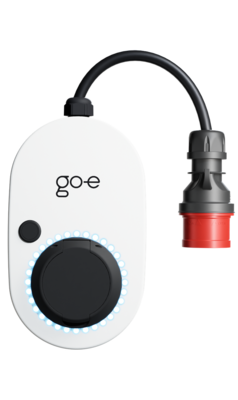
The intelligent wallbox can be used both stationary in the wall bracket and mobile. No electrician is required for the installation of the charging station. Charging power from 1.4 kW to 11 kW. 1-phase or 3-phase charging.
go-e Charger Gemini flex 22 kW
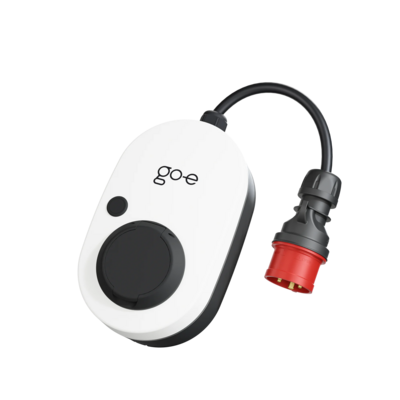
The intelligent wallbox can be used both stationary in the wall bracket and mobile. No electrician is required for the installation of the charging station. Charging power from 1.4 kW to 22 kW. 1-phase or 3-phase charging.
go-e Controller
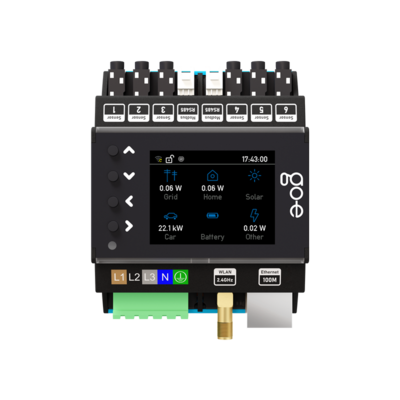
The go-e controller enables you to improve self-consumption from your PV system and ensures with dynamic load balancing that your house connection is not overloaded.
go-e Charger Gemini 11 kW
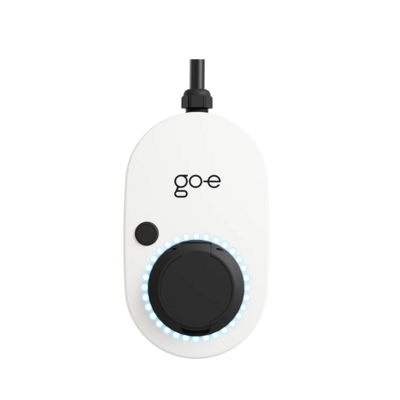
The compact wallbox for stationary use, at home or at the workplace. Simple installation, intuitive operation and smart comfort functions. Charging power from 1.4 kW to 11 kW. 1-phase or 3-phase charging.
go-e Charger Gemini 22 kW
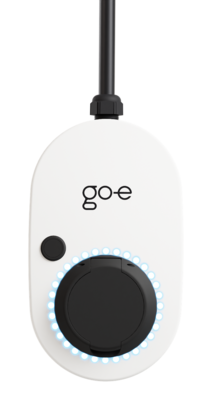
The compact wallbox for stationary use, at home or at the workplace. Simple installation, intuitive operation and smart comfort functions. Charging power from 1.4 kW to 22 kW. 1-phase or 3-phase charging.
Being used to charging at gas stations, you might expect to be able to pay by cash to charge your electric car. However, this is not the case in Europe, where it is rare to find charging stations accepting cash payments. Perhaps some providers will add such an option in the future, but it’s unlikely.
Summary
The most convenient methods for payment at charging stations are through an RFID card, a dedicated mobile app, Plug & Charge, or Autocharge. For Tesla owners, nothing beats using the Tesla Superchargers. The first two options may require committing to a specific mobility service provider, necessitating some research on your part.
Alternatively, if your vehicle is Plug & Charge or Autocharge enabled, you can take advantage of charging stations that immediately identify your car once the cable is connected, without asking any further questions. Keep in mind, however, that these are two entirely different features available for different electric car models and offered by different charge point operators.
The pricing structures vary, much like the different rates you find at various gas stations when buying diesel. It's a good idea to inquire about these rates. If you're looking to save money, it's wise to research the pricing offered by different mobility service providers and charge point operators in advance.
Currently, paying via a credit or debit card may be the costlier option compared to having a fixed tariff. However, the choice should align with your individual charging habits. Someone who seldom uses public charging stations has different requirements than a frequent user.
Most public charging stations for electric cars are not free, though some retailers, supermarkets, or workplaces may offer free AC charging as a perk.
Since November 2022, Tesco's 7/22kW Pod Point chargers are no longer free, and customers must now pay to use them. Rapid charge points at Tesco have always required payment.
The cost to fully charge an electric car depends on the battery size and electricity rates. AC charging at home is generally cheaper, while DC fast charging is more expensive due to higher installation and maintenance costs.
Change language
In order to provide the best user experience, we need to use some third party technologies. In the following form, you can set your preferences. If you want to change the preferences later on, you can always do this on our privacy settings page. Here you can find our privacy agreement and contact information.
Necessary cookies and functions are required to use the web-site in its basic form.
A required cookie to store login information for the backend, this is relevant for content managers only.
A required cookie to store your privacy preferences.
Functions extend the basic features of the website, third party technologies will be included and they might also collect information on their own.
Allows displaying map-material (images) from openstreetmap to provide interactive map-features. By allowing this feature, you accept the privacy agreement of openstreetmap.
Allows the playback of videos, that are hosted on vimeo.com. By allowing this feature, you acceot the privacy agreement of vimeo.
Allows the playback of videos, that are hosted on youtube.com. By allowing this feature, you accept the privacy agreement of google.
Allows the integration of Google Maps functionality. By allowing this feature, you accept the privacy agreement of google.
Allows the integration of AI-generated content. The content is being reviewed actively, but may contain any kind of third party services.
This chat uses a cookie to interact with you and maintain your chat history for quality assurance (see our Privacy Policy).
Allows the inclusion of ReCaptcha to helper us identify you as a human person. By allowing this feature, you accept the privacy agreement of google.
These cookies may be set by our partners through our website to profile your interests and show you relevant ads on other websites. The cookies do not store any direct personal data, but can uniquely identify your browser and device. If you do not allow this cookie, you will more often see non-personalised advertising. These cookies are only used with your consent and only as long as you have not deactivated the respective cookie.
One of the marketing cookies we use is Google Analytics, Facebook Pixel and Hotjar. We cannot rule out the possibility that Google Ireland or Meta Irland may pass on personal data to their parent company in the USA and that US security authorities may gain access to data on the basis of current legislation. If you allow marketing cookies, you expressly consent to this data transfer in accordance with Art. 49 (1) DSGVO.
These cookies enable us to determine visits, visitor sources and data on visitor behaviour in order to improve the quality of our website. This enables us to determine, among other things, which pages are the most popular and how visitors move around the website. The information collected is aggregated and cannot be directly attributed to an individual. If you allow these cookies, we can constantly develop the offers on our website according to your wishes.